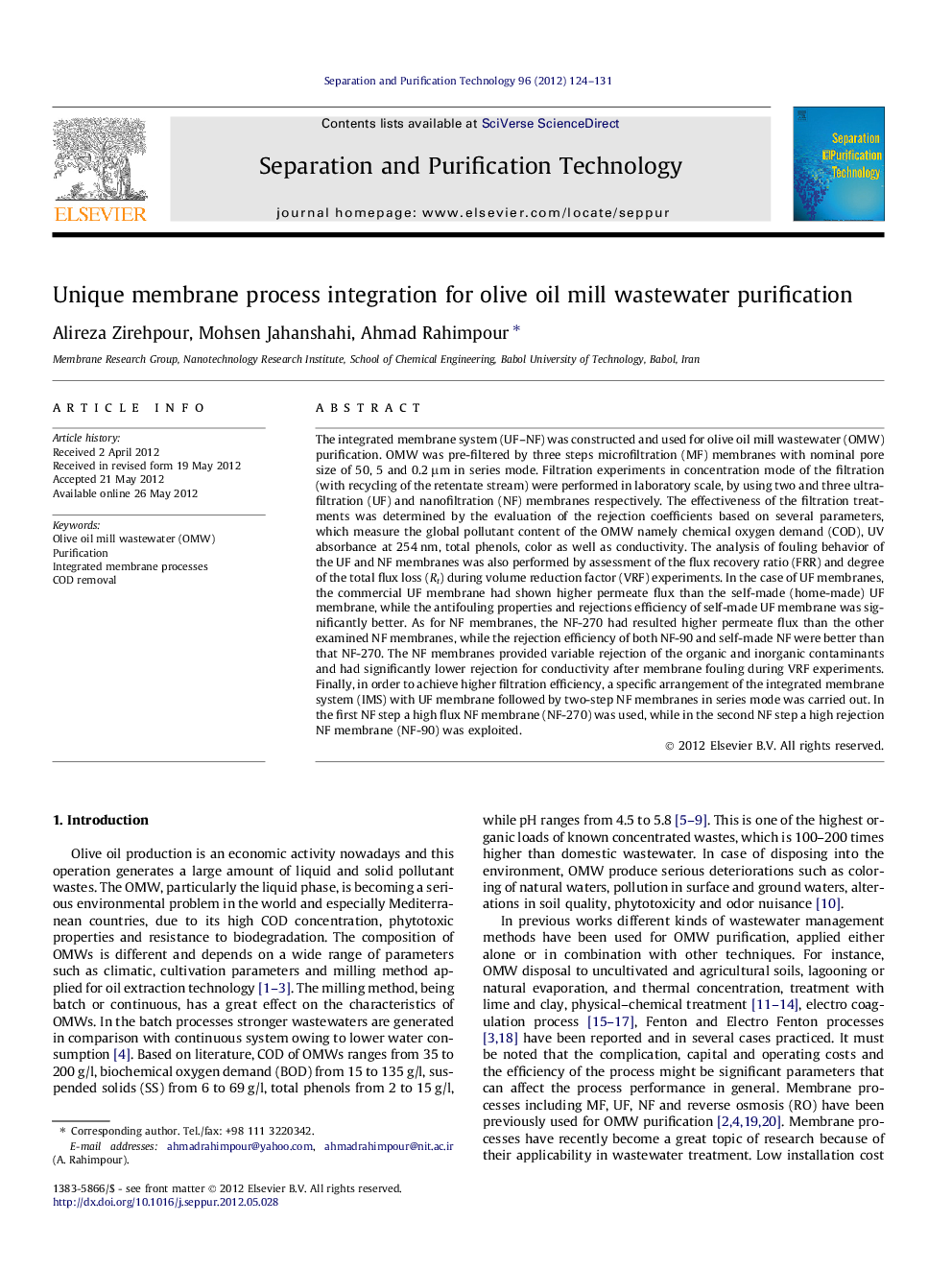| Article ID | Journal | Published Year | Pages | File Type |
|---|---|---|---|---|
| 642122 | Separation and Purification Technology | 2012 | 8 Pages |
The integrated membrane system (UF–NF) was constructed and used for olive oil mill wastewater (OMW) purification. OMW was pre-filtered by three steps microfiltration (MF) membranes with nominal pore size of 50, 5 and 0.2 μm in series mode. Filtration experiments in concentration mode of the filtration (with recycling of the retentate stream) were performed in laboratory scale, by using two and three ultrafiltration (UF) and nanofiltration (NF) membranes respectively. The effectiveness of the filtration treatments was determined by the evaluation of the rejection coefficients based on several parameters, which measure the global pollutant content of the OMW namely chemical oxygen demand (COD), UV absorbance at 254 nm, total phenols, color as well as conductivity. The analysis of fouling behavior of the UF and NF membranes was also performed by assessment of the flux recovery ratio (FRR) and degree of the total flux loss (Rt) during volume reduction factor (VRF) experiments. In the case of UF membranes, the commercial UF membrane had shown higher permeate flux than the self-made (home-made) UF membrane, while the antifouling properties and rejections efficiency of self-made UF membrane was significantly better. As for NF membranes, the NF-270 had resulted higher permeate flux than the other examined NF membranes, while the rejection efficiency of both NF-90 and self-made NF were better than that NF-270. The NF membranes provided variable rejection of the organic and inorganic contaminants and had significantly lower rejection for conductivity after membrane fouling during VRF experiments. Finally, in order to achieve higher filtration efficiency, a specific arrangement of the integrated membrane system (IMS) with UF membrane followed by two-step NF membranes in series mode was carried out. In the first NF step a high flux NF membrane (NF-270) was used, while in the second NF step a high rejection NF membrane (NF-90) was exploited.
► Two different NF stages instead of RO in the IMS as final treatment have been used. ► By exploiting NF, significantly lower pressure has been applied in the experiment which is more efficient financially. ► The self-made ultrafiltration membrane indicated reasonable COD removal and resistant against fouling. ► The COD removal at the whole purification steps was about 98.8% which is outstanding result for such processes.
